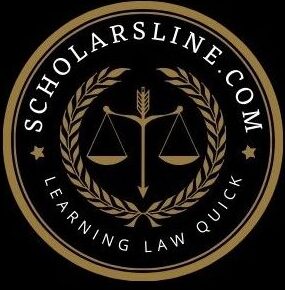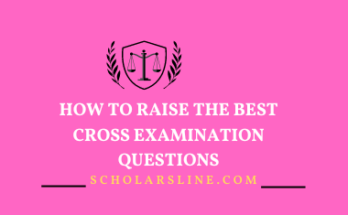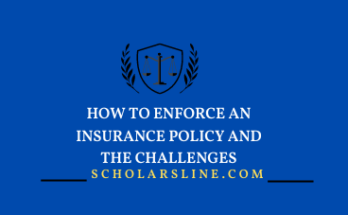How to take up a Copyright Protection
Introduction:
In an age where digital content is easily accessible and shareable, protecting intellectual property rights has become increasingly vital for creators and innovators. Copyright protection serves as a legal framework to safeguard original works of authorship, providing creators with exclusive rights over their creations and preventing unauthorized use or reproduction. In this article, we’ll explore the steps individuals can take to secure copyright protection for their creative works.
Understanding Copyright Protection:
Copyright is a form of intellectual property law that grants creators exclusive rights to control the use and distribution of their original works. These works may include literary works, music compositions, artistic creations, software code, architectural designs, and more. Copyright protection applies automatically upon the creation of the work and generally lasts for the life of the author plus an additional period of time.
Steps to Secure Copyright Protection:
1. Creation of Original Work:
– Copyright protection begins with the creation of an original work of authorship. The work must be independently created and possess a minimal degree of creativity to qualify for copyright protection. Ideas, facts, and concepts are not eligible for copyright protection; only the expression of those ideas is protected.
2. Identification of Rights:
– Determine the specific rights associated with your creative work. Copyright grants several exclusive rights to creators, including the right to reproduce, distribute, perform, display, and create derivative works based on the original creation.
3. Copyright Notice:
– While not required for copyright protection, including a copyright notice on your work can serve as a deterrent against infringement and provide notice to the public of your copyright claim. A typical copyright notice includes the symbol ©, the year of first publication, and the name of the copyright owner.
4. Registration with Copyright Office:
– While copyright protection exists automatically upon the creation of the work, registering your copyright with the appropriate government agency, such as the United States Copyright Office, provides additional benefits. Registration creates a public record of your copyright claim and is necessary to bring a lawsuit for copyright infringement in many jurisdictions.
5. Documentation and Recordkeeping:
– Keep detailed records of the creation and development of your work, including drafts, sketches, prototypes, and correspondence related to the creation process. These records can serve as evidence of your ownership and the originality of your work in case of disputes.
6. Use of Copyright Notices:
– Display copyright notices prominently on copies of your work to indicate your ownership and enforce your rights. This can include including copyright information in the metadata of digital files, on websites, and on physical copies of creative works.
7. Monitoring and Enforcement:
– Monitor the use of your copyrighted works to identify instances of infringement or unauthorized use. Utilize technology tools, such as copyright management systems and online monitoring services, to track and detect unauthorized uses of your content.
– If you discover instances of infringement, take appropriate action to enforce your rights, which may include sending cease-and-desist letters, filing takedown notices with online platforms, or pursuing legal remedies through litigation.
Challenges in Copyright Protection:
1. Global Enforcement:
– With the rise of digital technology and online distribution platforms, enforcing copyright across borders and jurisdictions has become increasingly complex. Copyright infringement can occur globally, requiring international cooperation and coordination to address effectively.
2. Emerging Technologies:
– Rapid advancements in technology, such as artificial intelligence, virtual reality, and blockchain, present new challenges and opportunities for copyright protection. Creators must stay abreast of evolving technologies and adapt their strategies to protect their rights in digital environments.
3. Fair Use and Licensing Issues:
– Determining the boundaries of fair use and navigating licensing agreements can be challenging, especially in cases where the use of copyrighted works is transformative or for educational purposes. Creators must understand the nuances of fair use and licensing to balance protection with the free exchange of ideas.
4. Orphan Works and Public Domain:
– Orphan works, whose copyright owners cannot be identified or located, present challenges for users seeking to legally use copyrighted content. Additionally, works that enter the public domain may be subject to misuse or misattribution, requiring vigilance to preserve the integrity of the public domain.
Conclusion:
Copyright protection plays a crucial role in incentivizing creativity, fostering innovation, and promoting the dissemination of knowledge and culture. By following the steps outlined in this guide and remaining vigilant against infringement, creators can secure their rights and ensure that their original works receive the recognition and protection they deserve in the digital age.
READ ALSO: How to Raise the Defence of Contributory Negligence in Law
How to Enforce Copyright Protection
Enforcing copyright protection involves taking proactive measures to prevent unauthorized use or reproduction of copyrighted works and pursuing legal remedies when infringement occurs. Here’s a detailed guide on how to enforce copyright protection effectively:
1. Copyright Registration:
– While copyright protection exists automatically upon the creation of the work, registering your copyright with the appropriate government agency provides significant benefits. In many jurisdictions, copyright registration is a prerequisite for bringing a lawsuit for copyright infringement. Register your copyright with the relevant copyright office, such as the United States Copyright Office, to establish a public record of your copyright claim.
2. Monitoring and Detection:
– Monitor the use of your copyrighted works to identify instances of infringement or unauthorized use. Utilize technology tools, such as copyright management systems, digital fingerprinting, and online monitoring services, to track and detect unauthorized uses of your content across various platforms, including websites, social media, and digital marketplaces.
3. Cease-and-Desist Letters:
– If you discover instances of infringement, send a cease-and-desist letter to the infringing party demanding that they immediately stop using your copyrighted work without authorization. Clearly outline your copyright ownership, the specific instances of infringement, and the legal consequences of continued unauthorized use. Provide a deadline for compliance and indicate that legal action may be pursued if the infringement persists.
4. Takedown Notices:
– In cases of online infringement, such as unauthorized use of copyrighted content on websites or social media platforms, file takedown notices with the hosting service or platform provider. Most online platforms have procedures in place for submitting copyright infringement notices, which may result in the removal or disabling of the infringing content. Provide evidence of your copyright ownership and the infringing use when submitting takedown requests.
5. Alternative Dispute Resolution:
– Consider alternative dispute resolution mechanisms, such as mediation or arbitration, to resolve copyright disputes outside of court. Mediation involves a neutral third party facilitating negotiations between the parties to reach a mutually acceptable resolution. Arbitration involves a neutral arbitrator making a binding decision on the dispute based on the evidence presented by the parties.
6. Litigation:
– If informal methods of resolution are unsuccessful or if the infringement is particularly egregious, consider pursuing legal action through litigation. Consult with an experienced intellectual property attorney to assess the merits of your case, gather evidence, and prepare a complaint alleging copyright infringement. In litigation, you may seek remedies such as injunctions to stop the infringement, monetary damages for losses suffered, and attorney’s fees.
7. International Enforcement:
– In cases of cross-border infringement, coordinate with legal counsel and law enforcement authorities in relevant jurisdictions to enforce your copyright internationally. International treaties and agreements, such as the Berne Convention and the WIPO Copyright Treaty, provide frameworks for cooperation and enforcement of copyright rights across borders.
8. Public Awareness and Advocacy:
– Educate the public about the importance of respecting copyright and intellectual property rights. Raise awareness of the economic and creative value of copyrighted works and the impact of infringement on creators and the creative industries. Engage in advocacy efforts to support stronger copyright protection laws and enforcement measures.
9. Maintain Documentation:
– Keep detailed records and documentation of your copyright registration, correspondence with infringers, takedown notices, and any other evidence related to copyright enforcement efforts. These records may be invaluable in proving your ownership of the copyrighted work and demonstrating infringement in legal proceedings.
10. Stay Informed and Adaptive:
– Stay informed about developments in copyright law, emerging technologies, and trends in infringement practices. Adapt your copyright enforcement strategies accordingly to address new challenges and opportunities in the evolving digital landscape.
By taking proactive steps to enforce copyright protection, creators can safeguard their intellectual property rights, deter infringement, and preserve the value and integrity of their original works. Collaboration with legal professionals, technology solutions, and advocacy efforts can enhance the effectiveness of copyright enforcement efforts and contribute to a culture of respect for creativity and innovation.
Thanks for going through this post; How to take up a Copyright Protection




